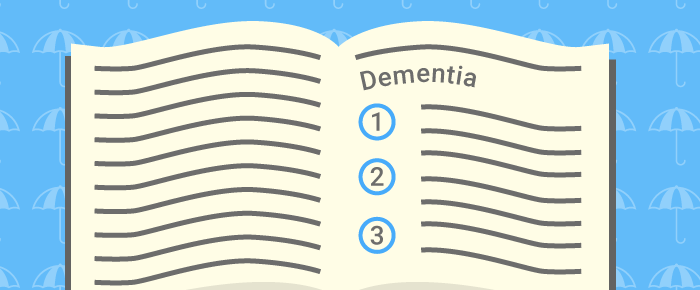Dementia: A Guide to the Diagnostic and Prognostic Terrain

Ever been “assessing the lay of the land” in a patient’s chart and find the nebulous term “dementia”?
Perhaps you are lucky enough to receive an accurate diagnosis but are unclear how the diagnosis presents, and the subsequent prognosis. Or perhaps you SUSPECT your patient has some kind of dementia and you need evidence to consider next steps. Let’s briefly walk through the bumpy terrain of dementia, including some categories of dementia with highlights of specific clinical presentations and prognosis for treatment planning.
Dementia is Just an Umbrella Term
Dementia is defined as change in memory, accompanied by changes in other cognition, psychological, and functional domains. The word “dementia” is less a diagnosis and more an overview description of many disorders. Common dementias include:
- Alzheimer’s disease
- Vascular dementia
- Lewy body dementia
It’s important to understand the differing clinical presentations and prognoses of the most common types of dementias, while enhancing your clinical assessment and treatment planning.
Some Cognitive Changes are NOT Dementia
Perhaps you have kiddingly said, “I must have dementia.” What is acceptable cognitive change as you age and when is it problematic? Easy clinical techniques are available to differentially diagnose age-related cognitive decline, delirium, and depression. Standardized tests are available that are good for clinically differentiating dementia from typical cognitive function and should be part of a therapist’s toolkit.
Emerging Ideas about What Kind of Change is Possible in Dementia
Without must hesitation, I would guess that you learned that people with dementia are not capable of learning new tasks. Perhaps taken a step further, the brain of a person with dementia is not capable of any kind of physiological change or neuroplasticity.
New neuroscience evidence and intervention studies are turning these outdated ideas on their head. It may be possible to elicit permanent or lasting change in the brain of someone with dementia using the right type of training tenets. We have learned from stroke studies that certain therapeutic techniques facilitate neuroplasticity such as:
- Practicing meaningful activity
- High repetition
- Massed practice
- Attention to cuing and support strategies
- Therapeutic relationships with care providers
Applying these strategies to people with dementia may facilitate neuroplastic change and long-term retention for performance.

